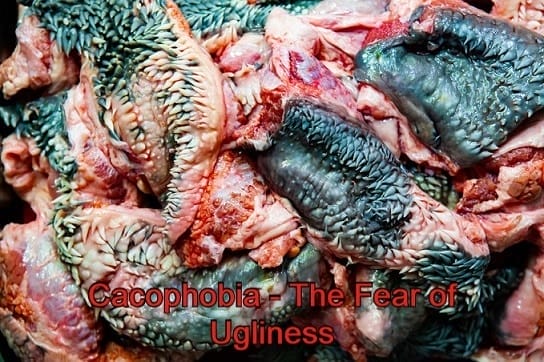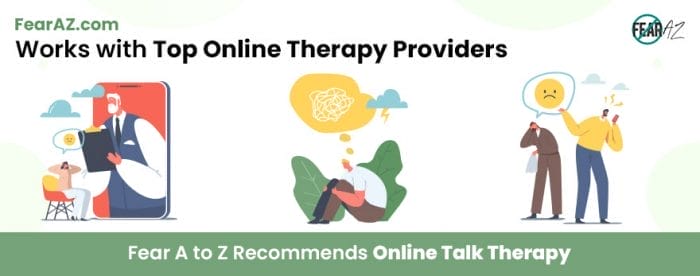Share This Article
Decoding Cacophobia: The Fear of Ugliness
Do you feel anxious when you encounter or think of something that you consider ugly? Is it difficult to explain why you avoid looking at certain things?
Do you feel extreme disgust or fear when you look at someone who is unattractive? You don’t hate the person, but the mere sight of their face makes you want to throw up or even run away.
If you have had any of these experiences, you may have a fear of ugliness or cacophobia. The worst thing about cacophobia is that you are fully aware of how illogical your thoughts and response are. There’s no real threat, but you can’t seem to help your unreasonable reaction.
The good news is that it is possible to overcome this rare phobia. To do so, you first need to get to the root of the problem.
Everything You Need to Know about Cacophobia
Is cacophobia real? While it seems like a trivial matter, it is an officially recognized phobia. Let’s take a closer look at the meaning of cacophobia and its possible causes.

Cacophobia is a strong fear or disgust of anything ugly. It comes from the terms caco, which means “unpleasant,” and phobia, which means “fear.” Since people have different ideas of what is ugly, it can be tricky to identify or predict the triggers. What may strike fear in one person with this condition may not affect another.
One suffering from cacophobia tries to avoid the object or person they consider unpleasant to look at. This avoidance could make life difficult for them and also the person they avoid. The obsession over how something or someone looks may also cause strained relationships or miscommunication in the workplace. You may give the impression that you are a biased person.
Cacophobia Causes
Environmental Factors
Your culture, society, family, and peer group all influence your definition of beauty and ugliness. These factors may cause you to develop cacophobia. Other negative experiences may also cause this irrational fear. For example, being a victim or witness of violent crime can be traumatic. It also means you associate graphic images with danger. Another factor is low self-esteem, which may cause a person to react badly to anything that does not match the usual standard of beauty.
Genetic Factors
A history of mental illness in the family could put you at risk for developing mental disorders or phobias. This factor is true not only for cacophobia but for other phobias. There’s also a chance that cacophobia is a symptom of other mental issues.
Symptoms of Cacophobia
Cacophobia symptoms are similar to those of anxiety disorders. The characteristics of this phobia could easily be mistaken for bias or harsh criticism, so diagnosis can be challenging.
Mental/Emotional Symptoms
- Poor self-image and self-esteem
- Anxiety attack after seeing something unpleasant
- Uncontrollable thoughts that lead to the person panicking
- Disgust
- Narcissistic behavior as a coping method
- Highly objective about the appearance of everything
- Running away or escaping
- Avoiding contact
- Discomfort
Physical Symptoms
- Rapid heartbeat
- Choking or chest pain
- Dry mouth
- Shortness of breath
- Shaking or trembling
- Headaches
- Sickness
- Sweating
- Dizziness
- Nausea or vomiting
- Pupil dilation
- Heightened response to the subject of fear
How Do You Deal with Cacophobia?
Cacophobia treatment might begin by learning to help yourself to cope with or even overcome your fear. Listed below are some self-help strategies you can practice. Self-help strategies may not provide a permanent solution, but they can help reduce cacophobia symptoms.
Exercise
Physical activity can help release calming hormones, flush out toxins, and relieve stress. Yoga, tai chi, and other workouts incorporate relaxing body postures and movements that are effective at reducing anxiety. Exercise alone may not change the phobia, but it may reduce stress and anxiety. It may also make other therapies and meditation more effective.
Mindfulness and Meditation
These are methods to change your thought processes and response to stress. Mindfulness and meditation work by guiding the thoughts to find a pathway that calms you down in the presence of a stressor.
When someone with cacophobia encounters a stressor or possible threat, their default response is fear. However, ugliness is not a real threat. Meditation and mindfulness help put such thoughts to rest by allowing you to focus more on the present. You have a better grasp of your situation, which lessens the intensity of the fear response. The best part: Practicing mindfulness and meditation can be done on your own.
Diet
Monitor your diet for a week to see whether a particular ingredient is changing your mood. Stimulants like caffeine can make you more anxious or dehydrated, which then results in the inability to think clearly.
Professional Help for the Fear of Ugliness
If self-help strategies aren’t enough to take the edge off your phobia, seek the guidance of a mental health professional. Your therapist may offer several options to manage your phobia symptoms.
Cognitive Behavioral Therapy (CBT)
CBT helps you to think about the event by stepping away from it. Distance ensures the trigger isn’t a threat and gives you control over how deeply you want to think about the stressor. The therapist will guide you with questions and techniques to put your mind on the right track.
Exposure Therapy
Also known as desensitization, exposure therapy works to reduce the effect of the stimulus by repeated exposure. It is helpful because, in a controlled environment, a professional can observe the impact of the stimuli and how a person reacts.
This controlled exposure allows the patient to develop resistance towards the stimuli. However, exposure therapy may have negative effects that could worsen the fear response, so it is important to have the guidance of a licensed therapist.
Dialectical Behavior Therapy (DBT)
DBT is often done in a group setting. It uses techniques like the half-smile (which is exactly what it says), mindfulness, and distress tolerance. Half-smiling techniques will get you to think about the trigger as you try to keep a half-smile on your face. This tricks your brain into thinking there is no threat and therefore puts you at ease.
While mindfulness techniques are similar to the ones mentioned in the self-help section, these are practiced with a group suffering from a similar phobia. It also includes building your tolerance for the stressor, so you don’t respond as drastically.
Talk Therapy
This gives one a chance to openly discuss the object of fear. Talking about the stimulus can bring out the root cause or event that triggered it. This therapy also works through repetition, where the therapist helps the person change unhelpful thought processes into something more reasonable and helpful.
Medication
Prescription medication could help reduce physical symptoms associated with your level of anxiety and stress. If you have a biological cause behind your phobia then medication could do wonders. However, such medications often have side effects, so be sure to follow your physician’s instructions.
Learning to Cope with Cacophobia
Learning to cope with cacophobia takes time. It involves not only mastering your fear, but also changing your perception of ugliness. Such opinions or views have a root cause that is not always easy to figure out.
It’s possible to overcome a fear of ugliness and appreciate people or things that may not seem attractive at first glance. No matter how difficult the phobia may look, it is always manageable with the right mindset and support.




